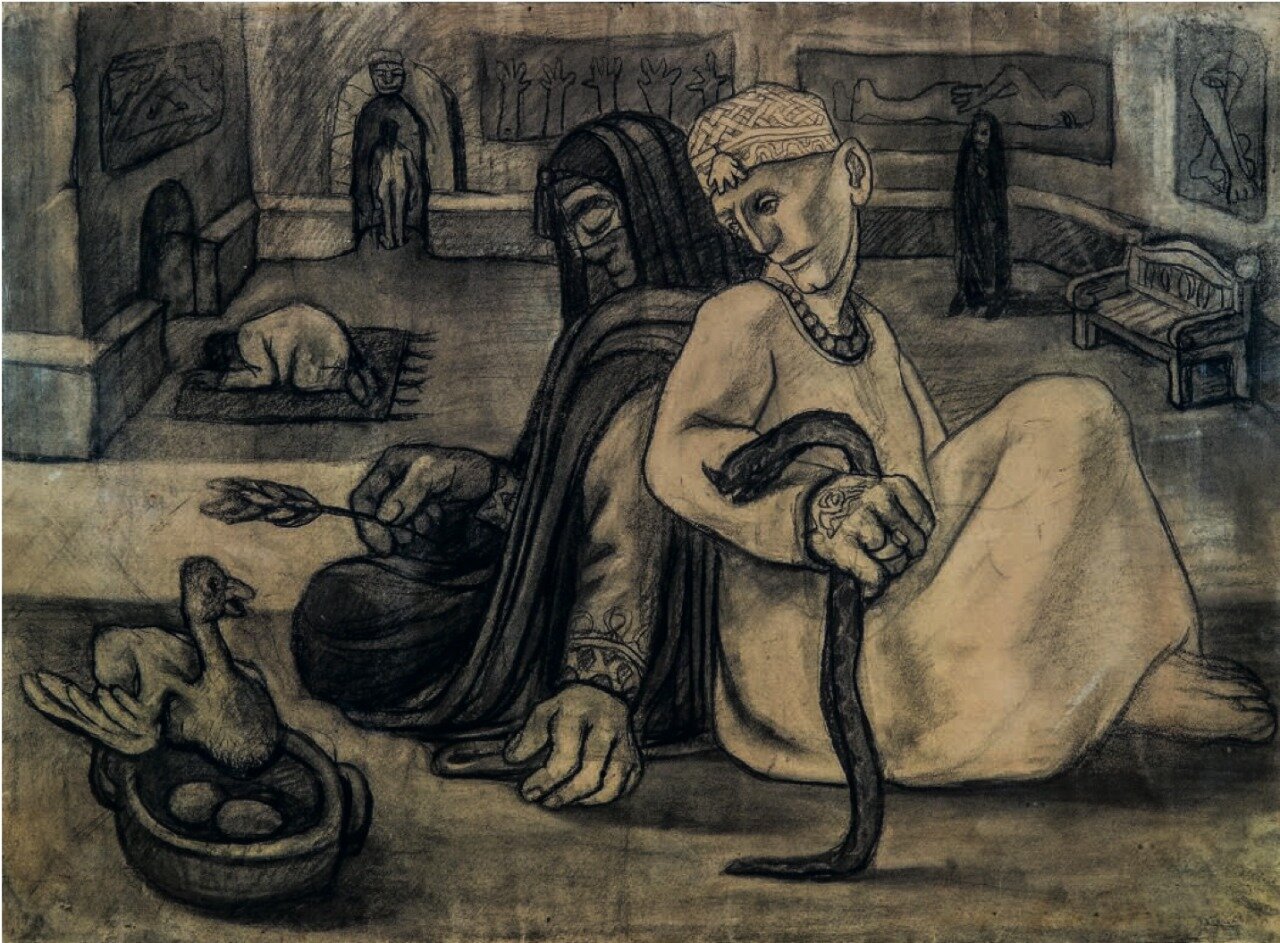Artwork Verification and Appraisal
World of Love, Charcoal on Paper- 50x70 Cm , Circa 1952
Provenance: Previous Owner of the work Dr Wasfi played the former roles: Cultural Advisor for “UNESCO” and for Francophone matters, Professor at the Cairo university, French department, Director of Hanager theater and Gallery for more than 20 years (The gallery first exhibition was for Mahmoud Said), Advisor of foreign relations for the Egyptian Grand Museum, Editor in Chief of Foussoul Magazine published by the Egyptian organization for books. Director of National Theater (Till December 2001), Director of the International festival of Experimental theater in Cairo, to name of few (for more info please refer to the Attached CV in French) she was granted few honorary prizes: Medal of Science (Under Nasser), Medaille Chevalier for arts and literature From the French Ministry of Culture, Art and literature officer, From the French Ministry of Culture, selected personality of experts From the UNESCO, Director and member of Jury in major festivals and prizes in art and literature in Egypt and the Middle East , (for more information please refer to the attached CV in French) Aimee Azar was Dr Wasfi’s professor and Co-supervisor on her PHD in Frensh literature and Critic
The World of Love Painting By Abdel Hadi Al Gazzar
The couple serenely leaning on each other embraced by a triangle composition creating a sense of stability and strength and uniting both the world of love and the world of mysticism and supernatural, the world of consciousness and symbolism. Strong and fine lines outlining their figures that softens in the tender expression on the man’s face and is alerted by the serpent in his hand right hand.
Historically, serpents and snakes represent fertility or a creative life force (It also implicitly denotes sexuality and desire). In Egyptian Mythology, they are symbols of rebirth, transformation and immortality., The serpent (Nehebkau named in hierographic -very similar to the form of the snake in Al Gazzar drawing) is connected to aspect of the soul. Al Gazzar’s drawings and paintings specifically in the first stage of his artistic journey are composed of meaningful symbols and insignia that has profound significance rooted in the traditions and rituals, a mélange of ancient Egyptian inherited beliefs and the artist’s steeped religious traditions, superstitious and supernatural believes and rituals passed through time and generations in certain old areas of the city.
The second period was more influenced by the relation of humans and technology and was also stirred by socio political changes after 1952 revolution. Through compositional empowerment of elements and symbols harmoniously integrating, Al Gazzaar portrays the influences of such environment putting the subconscious into visual depiction. Symbolism is often repeated in Al Gazzar’s work such as spider web, the snake, rat, fish, bull, key hand-print, the horse, shell to name a few. It adds an enchanting and mysterious narrative and induces imagination. Harmony and total serenity is reached, through the different connotation that ones experience once you look at the drawing. The artist’s lines are, bold and confident outlining details of the man robe, necklace, wring, and the woman veil, Galabeya, While the woman appear unconscious of her surroundings, with her closed eyes and in a dreamy- like state, her face is covered with a transparent borkoo (face cover). She is holding in her right hand a sheaf of wheat, which symbolizes prosperity and fertility that is likely realized by her, on a subliminal dimension rather than on an awakened state. In ancient Egyptian mythology wheat relates to “Osiris” an Egyptian God, usually identified as the god of transition, rebirth, and regeneration. Wheat was also associated with “djed” one of the more ancient and commonly found symbols, it is commonly a pillar-like symbol but was depicted in the early beginnings as wheat and represents stability. While the bowl with bird and the two eggs relates to rebirth, creation of life and duality. This concept of duality, life and death, chaos and harmony, colored much of the ancient and general Egyptian way of thinking and can be seen in the history of Egypt and could be also suggest here the relationship. While the background is a totally different scene, it also represents a mixture of symbols that highlight the rich culture and history. A drawing hanging on the wall behind the couple with five palm trees/hands prints that are believed to protect from the evil eyes. Another figure at the back, a nude woman that seem to be performing special rituals and reaching to another gateway to other worlds. On the left a man praying in front of an altar that looks like a temple rather than a mosque with a drawing of a triangle hanged above him.
A drawing full of symbolism, hope with a promising life prospects and optimism, inviting us to the “World of Love” as Al Gazzar portrays/ imagines, a world of harmony, supernatural and the magical. (The Title of the drawing is written on the back in Arabic).


